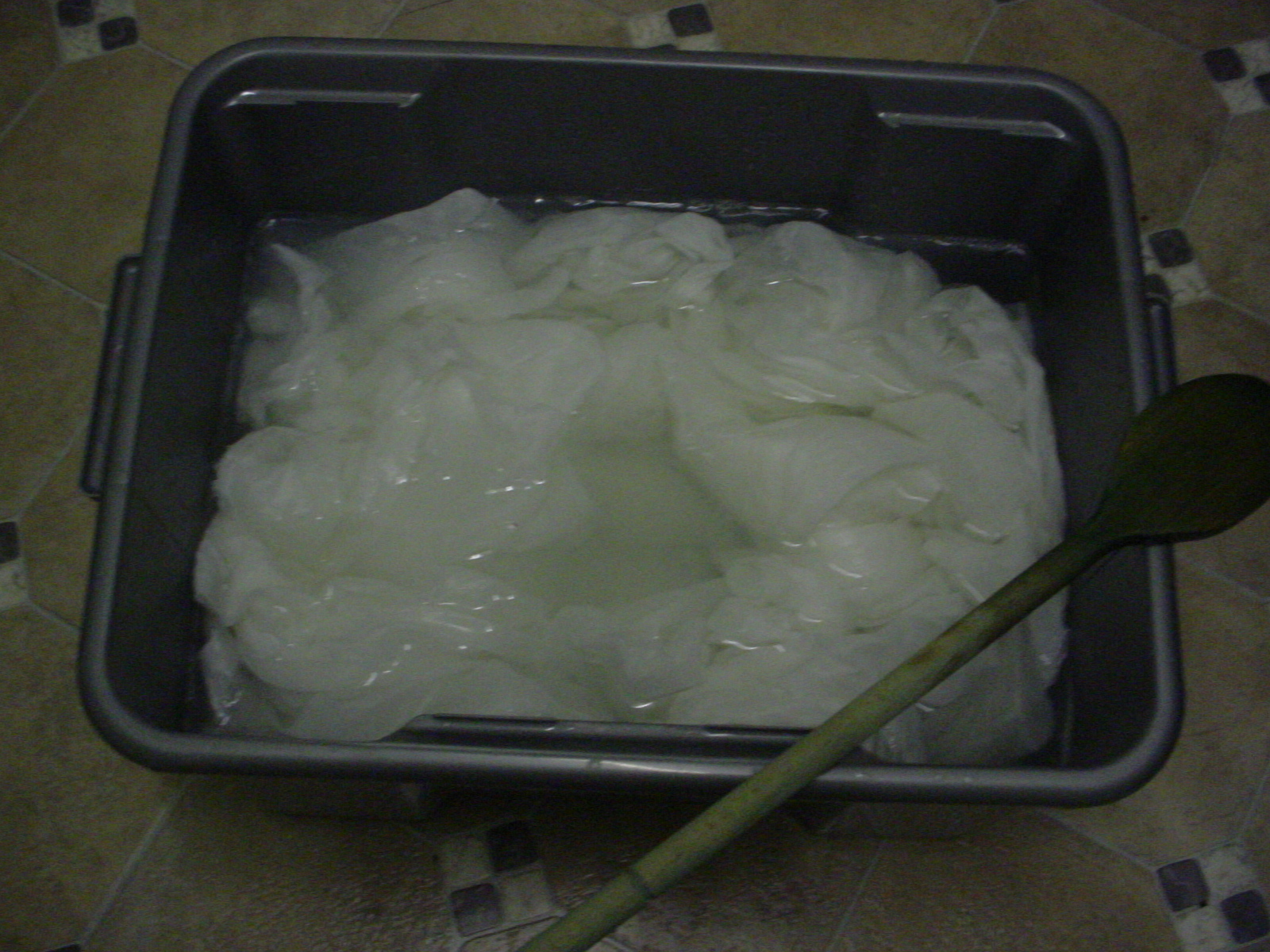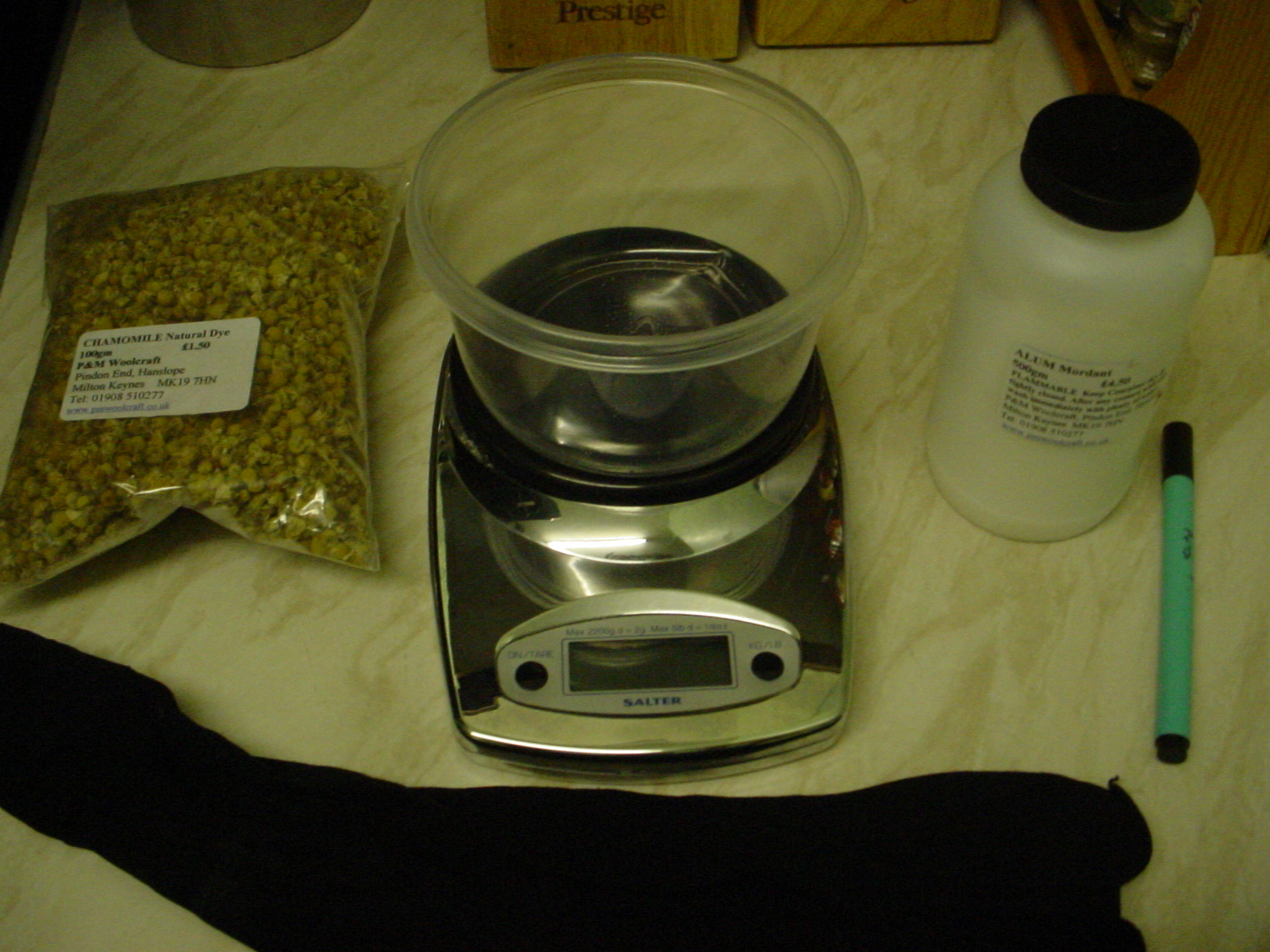Jo's medieval dying experiments
Ok, so I have just come back from another re-enactment fair and not been able to find the colour linen that I would like, so I have decided to try to naturally dye some white linen myself, in the hope of achieving the colours I would like.
I bought a selection of natural dyes and mordants from PM Woolcraft a while ago and, now that I have read a few books on the subject, I'm about ready to begin. I only have one slight problem; all of the books I have read have all been related to how to dye wool shanks, while my project is about dying linen. So everything I will be doing will be a complete experiment, so I thought I would keep a project diary, which will hopefully allow the successful reproduction of my 'recipes'. As I have several colours I would like to achieve, I'm going to be doing several projects at the same time.
So these are the colours I am hoping to achieve:
A dark black linen (5m) for a kirtle outer.
A dark but vibrant green linen (5m) for lining my kirtle.
A rich red linen (5m) for a dress (probably a lining).
A goldy/yellow linen (5m) for a dress lining.
Preparations of the fabric
I washed all of the 20m of linen to remove the chemicals from the new fabric. I used a very small amount of detergent and I did not use any conditioner as I wanted to limit the number of chemicals in the fabric. (All of the books stressed the importance of limiting chemical interaction as it would effect the colour outcomes)
I cut the 20m length of linen into 5m lengths As I have a number of plastic boxes I thought I would use these as dye baths . I weighed one of the 5m linen pieces and found that it weighed XXX and then I added water and Alum. I left the alum and water mixture to soak over night. After risining it thoroughly I left it in the plastic box until my dye bath was prepared.
. I weighed one of the 5m linen pieces and found that it weighed XXX and then I added water and Alum. I left the alum and water mixture to soak over night. After risining it thoroughly I left it in the plastic box until my dye bath was prepared.
The dye bath was I used a whole bag of camomile ( 100 grams) then I began boiling the camomile in a large
I bought a selection of natural dyes and mordants from PM Woolcraft a while ago and, now that I have read a few books on the subject, I'm about ready to begin. I only have one slight problem; all of the books I have read have all been related to how to dye wool shanks, while my project is about dying linen. So everything I will be doing will be a complete experiment, so I thought I would keep a project diary, which will hopefully allow the successful reproduction of my 'recipes'. As I have several colours I would like to achieve, I'm going to be doing several projects at the same time.
So these are the colours I am hoping to achieve:
A dark black linen (5m) for a kirtle outer.
A dark but vibrant green linen (5m) for lining my kirtle.
A rich red linen (5m) for a dress (probably a lining).
A goldy/yellow linen (5m) for a dress lining.
Preparations of the fabric
I washed all of the 20m of linen to remove the chemicals from the new fabric. I used a very small amount of detergent and I did not use any conditioner as I wanted to limit the number of chemicals in the fabric. (All of the books stressed the importance of limiting chemical interaction as it would effect the colour outcomes)
I cut the 20m length of linen into 5m lengths As I have a number of plastic boxes I thought I would use these as dye baths
 . I weighed one of the 5m linen pieces and found that it weighed XXX and then I added water and Alum. I left the alum and water mixture to soak over night. After risining it thoroughly I left it in the plastic box until my dye bath was prepared.
. I weighed one of the 5m linen pieces and found that it weighed XXX and then I added water and Alum. I left the alum and water mixture to soak over night. After risining it thoroughly I left it in the plastic box until my dye bath was prepared.The dye bath was I used a whole bag of camomile ( 100 grams) then I began boiling the camomile in a large

